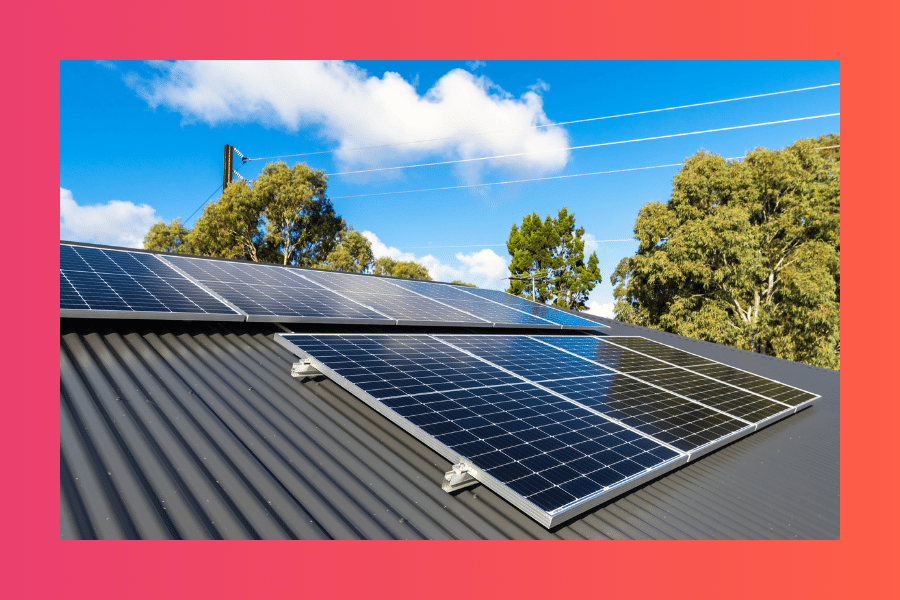Redefining the Relationship Between Cryptocurrency and Renewable Energy in Australia
Renewable energy and cryptocurrency are two sectors that are presently seeing major growth. Although they’re certainly very different in many ways,...
3 min read
![]() Solar Trust Centre Team
:
Apr 6, 2022 8:00:00 AM
Solar Trust Centre Team
:
Apr 6, 2022 8:00:00 AM

‘Not realistic to use right now’, ‘inefficient’, and ‘a hindrance on economic growth’. Once upon a time such statements like these were bandied about Australia when it came to criticising renewable energy sources, as those who sought to promote fossil fuel use put forward a case for non-renewable sources like coal power remaining the nation’s key provider of energy for years to come.
Yet for a long time now the writing has been on the wall for coal power, and just as the rapid speed and scale of renewable energy’s growth in Australia - in particular, rooftop solar! - has been astounding, so too is the rate at which coal power is declining in popularity here and abroad.
The recent announcement that Eraring, the nation’s largest coal-fired plant, is seeking to close 7 years ahead of schedule and wind up operations in 2025, is illustrative of this trend. Just as this news is a landmark moment in Australia’s green energy transition, other recent developments show that while the use of coal power is indeed coming to an end soon in Australia, ultimately its end may be far sooner than anyone would’ve imagined just a short while ago.
In mid-February, Origin Energy announced it had sought approval from the National Energy Market [NEM] to close Eraring by the middle of this decade. While it was news to the general public, it’s come to light the NSW government had been aware of this for some time, and that this potential closure was in the works for a long while before this announcement. Yet although the future of Eraring is now expected to be very short, the reality is other coal-fired plants could follow it soon, based upon the simple fact that the numbers surrounding coal power in terms of profits are shifting.
Excluding Eraring, there are 15 coal-fired power plants remaining in Australia. At the time of writing, all are scheduled to close by 2051, and 7 of them are set to stop operating by 2035. The year 2035 may still seem like a long time away - and to many, it’s indeed too far away! - but when reflecting on energy trends of the 21st century, there’s one area where renewables - in particular, solar power - and coal share some common ground: the rate of speed surrounding change in their industry.
Just as recent years have evidenced coal power’s time in use is rapidly ending - with the United Kingdom notably and commendably promising to end the use of it as soon as 2024 - the speed seen in the renewable energy sector has also been rapid; though travelling in another direction. So much so that it’s even caught some experts like Ross Garnaut - who STC has previously interviewed - by surprise. Although the speed at which solar power has been taken up is a welcome development, the reality is more remains to be done. Not only to ensure Australia makes a proper contribution to driving down emissions that are causing climate change, but also because there is immense opportunity for Australia to substantially grow jobs and profits nationwide in renewable energy in the years ahead - provided it makes the necessary investments in this area now.
Another factor working against the future of coal is the emergence of a strong push by shareholders - and would-be aspiring shareowners - across energy companies to see these businesses more rapidly shift to cleaner and greener practices. Arguably no story has shown this dynamic so prominently as the recent news surrounding the attempted takeover of energy giant AGL by a consortium led by Australian billionaire Mike Cannon-Brookes, famous for being a co-founder and now the co-CEO of tech businesses Atlassian.
In mid-February news broke that Mr Cannon-Brookes and his consortium had made a bid to buy AGL for AU$8 billion. This was done with an aspiration, upon assuming control of the company, to accelerate the shut down of coal-fired assets AGL currently holds, and in turn, replace these holdings with renewables so as to avoid harm to shareholders and the consumer’s hip pocket. It’s now known that the initial offer made by the consortium has been rejected - and in turn at the time of writing it's unclear what the ultimate outcome of this story will be - but this event illustrates that any public company contributing to climate change who cannot convincingly evidence that they’re making an ASAP transition to an emissions-free existence, will be increasingly vulnerable to investor activism, and from those beyond seeking a clear-cut and decisive shift to clean and green operations.
In our opinion at STC, these recent events collectively illustrate a number of key facts about the state of coal power in 2022. The first is - for all the efforts of a small but loud crowd in the public arena who even today try to suggest coal and other fossil fuels are going to continue to be very popular, and necessary in Australia for many years to follow - that coal power’s end is nigh. Second, there can be the expectation that more and more stories will be seen like this soon, where coal-fired power plants - even if set to shut relatively soon anyway - look to move up their timetable for closure. Thirdly, even where coal power continues to exist, it stands at risk of rapidly losing business support, just as it has long ago lost its social license in the minds of many, given the positive alternative that clean and green technology like solar power offers.
In short, any continued embrace of coal power in Australia will guarantee the nation a future that is full of uncertainty, disunity, and missed opportunities. When this is what’s on offer with coal, it’s no surprise support for renewables like solar polar continues to grow rapidly among households, small businesses, and the Australian community as a whole.

Renewable energy and cryptocurrency are two sectors that are presently seeing major growth. Although they’re certainly very different in many ways,...

In 2022 Australia is further solidifying its status as a world-leading country when it comes to embracing solar power, and South Australia has...